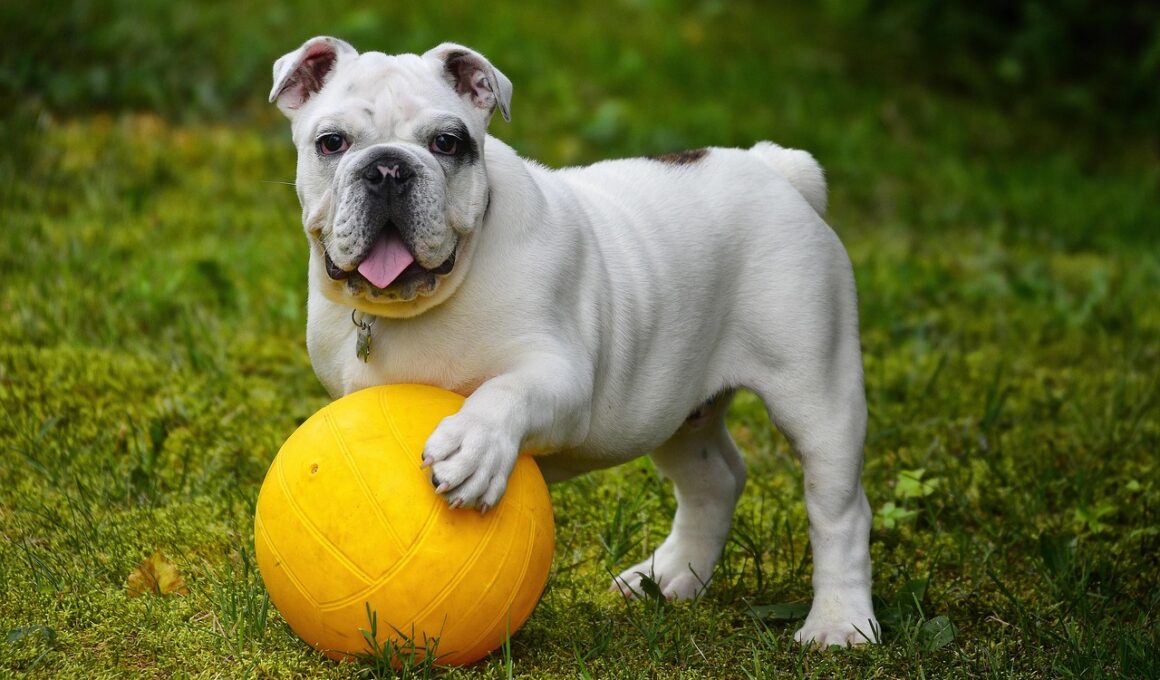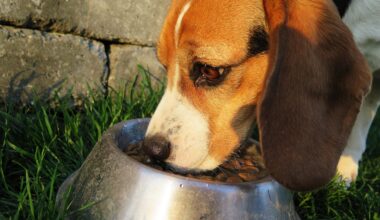Vitamin D in Dogs: What You Need to Know
Vitamin D is crucial for the overall health of dogs, playing a significant role in calcium and phosphorus metabolism. Without adequate Vitamin D, your dog could develop various health issues, particularly relating to bone health. Understanding how Vitamin D works is essential for every dog owner. Dogs typically obtain Vitamin D through a balanced diet or exposure to sunlight. However, the amounts necessary can vary greatly based on several factors including the dog’s diet, size, age, and even the environment. Therefore, ensuring that your dog is receiving the right amount of vitamins is critical. Over-supplementation can lead to toxicity, which is a serious concern. Symptoms of Vitamin D toxicity may include increased thirst, urination, or gastrointestinal issues. Consult with your veterinarian before making any changes to your dog’s diet or introducing supplements. Remember, the right balance is key to maintaining their health. Dogs may not require supplementation if they are on high-quality commercial diets. Pay attention to your dog’s specific needs when considering their Vitamin D intake to promote longevity and vitality.
Sources of Vitamin D for Dogs
There are several sources of Vitamin D that can benefit your dog extensively. One of the primary sources is fatty fish, such as salmon or sardines, which are rich in this nutrient. Fish oil supplements can also provide adequate amounts of Vitamin D. Furthermore, liver is a fantastic source that frequently gets overlooked, and it is packed with essential nutrients too. Additionally, some dog foods are fortified with Vitamin D to help meet their nutritional requirements effectively. As a dog owner, it’s important to read the labels of pet foods to ensure they are fortified with this vital vitamin. Foods that contain animal-based proteins often have higher levels of Vitamin D, making them a better option. However, as mentioned before, moderation is essential. Over-supplementing can lead to health issues. When switching to new food sources, it’s best to introduce them gradually into your dog’s diet to monitor for any adverse reactions. Consulting your veterinarian can also help identify the best sources of Vitamin D tailored for your dog’s unique needs.
Deficiency in Vitamin D can lead to serious health implications. Dogs lacking sufficient Vitamin D may experience bone weaknesses or deformities as the body fails to absorb calcium properly. This deficiency can also result in a condition known as rickets, which is characterized by the softening and weakening of bones in puppies. Older dogs with insufficient Vitamin D may face an increased risk of osteomalacia, leading to bone pain and increased susceptibility to fractures. Notably, symptoms of a deficiency may not always be apparent immediately, so regular veterinary check-ups are critical. If you notice any unusual behaviors, such as reluctance to exercise or difficulty moving, this may signal an underlying issue. Your veterinarian can conduct blood tests to assess Vitamin D levels. If a deficiency is diagnosed, dietary changes or supplementation may be recommended. However, avoid self-diagnosis, as it can complicate treatment. Always opt for veterinarian guidance before any adjustments. Ensuring that your dog is receiving adequate Vitamin D not only supports their bones but enhances overall well-being.
How Much Vitamin D Do Dogs Need?
The recommended amount of Vitamin D intake for dogs varies based on their size and health status. For most dogs, the National Research Council suggests approximately 227 IU (International Units) per kilogram of body weight. However, this is just a guideline, and certain factors can affect these needs. Puppies, for example, may require more Vitamin D due to their growth requirements. Conversely, older dogs might need different levels to support bone health and mobility. It’s critical to consider each dog’s unique needs and adjust their diet accordingly. Foods that naturally contain Vitamin D can help meet these recommendations. Nevertheless, caution is necessary when it comes to supplementation; more isn’t always better. Regular blood tests can help determine if your dog’s current levels are adequate or if adjustments are needed. Your veterinarian’s input is invaluable when assessing these needs. Supplementing without guidance can lead to imbalances or even toxicity, emphasizing the need for knowledgeable advice. Adjusting your dog’s diet based on veterinary recommendations can help ensure they receive adequate nourishment.
In addition to dietary sources, exposure to sunlight plays a vital role in synthesizing Vitamin D in dogs. When dogs spend time outdoors, particularly in sunny climates, their skin can absorb ultraviolet rays, triggering the natural production of Vitamin D. However, it’s important to balance outdoor time and protect your dog’s skin. Too much sun exposure can lead to sunburn or heatstroke, which are harmful. If your dog has a light coat or sensitive skin, you may want to limit outdoor sun exposure and focus on diet to meet Vitamin D needs. For indoor dogs, consider incorporating safe, sunlit areas where they can enjoy some midday rays, even if it’s just for short periods. Dog parks or backyards are great for this. Always supervise your dog during outside play and provide fresh water. A good balance of sun and dietary sources can ensure proper Vitamin D levels. If you live in areas with limited sunlight, you might need to rely more on dietary choices or supplements. Always adjust these strategies according to your dog’s habits and needs.
Potential Risks of Vitamin D Over-Supplementation
While Vitamin D is critical for a dog’s health, over-supplementation can lead to severe health issues. Vitamin D toxicity occurs when excessive amounts accumulate in the body, leading to hypercalcemia or high calcium levels in the blood. This condition is dangerous and can cause symptoms such as vomiting, lethargy, increased thirst, and possibly kidney failure. Recognizing signs of overdose quickly is crucial for effective treatment. It is essential to differentiate between needed supplementation and potential risks. If you suspect your dog has received too much Vitamin D or is showing concerning symptoms, contact your veterinarian immediately. Veterinary intervention can prevent long-term damage. The best approach is to provide the correct diet that contains the right amounts of Vitamin D without additives. Blood work is often the best method for determining whether your dog has adequate nutrient levels or if there’s a risk of toxicity. Regular vet visits will protect your furry friend from unhealthy imbalances. Being proactive in your dog’s dietary needs ensures that they remain healthy and thrive.
In conclusion, Vitamin D serves a pivotal role in maintaining the health of dogs. However, understanding how it functions, the appropriate sources, and recognizing the symptoms of both deficiency and toxicity is vital for dog owners. Always consult with a veterinarian to devise a dietary plan tailored specifically to your dog’s needs. Each dog is unique, and what works for one may not necessarily suit another. Engaging in regular health check-ups can help monitor your dog’s vitamin levels and overall health. A well-informed owner can make the best dietary decisions, ensuring their dog receives the right nutrients. Knowledge about the effects of Vitamin D and how to manage it can significantly contribute to a long, healthy life for your dog. Always prioritize health over convenience when it comes to supplements. Ensuring a balanced diet rich in natural Vitamin D sources and maintaining an active lifestyle will aid in your dog’s well-being. Keep up with the latest recommendations for dog nutrition to ensure that your furry companions enjoy the best life possible.


